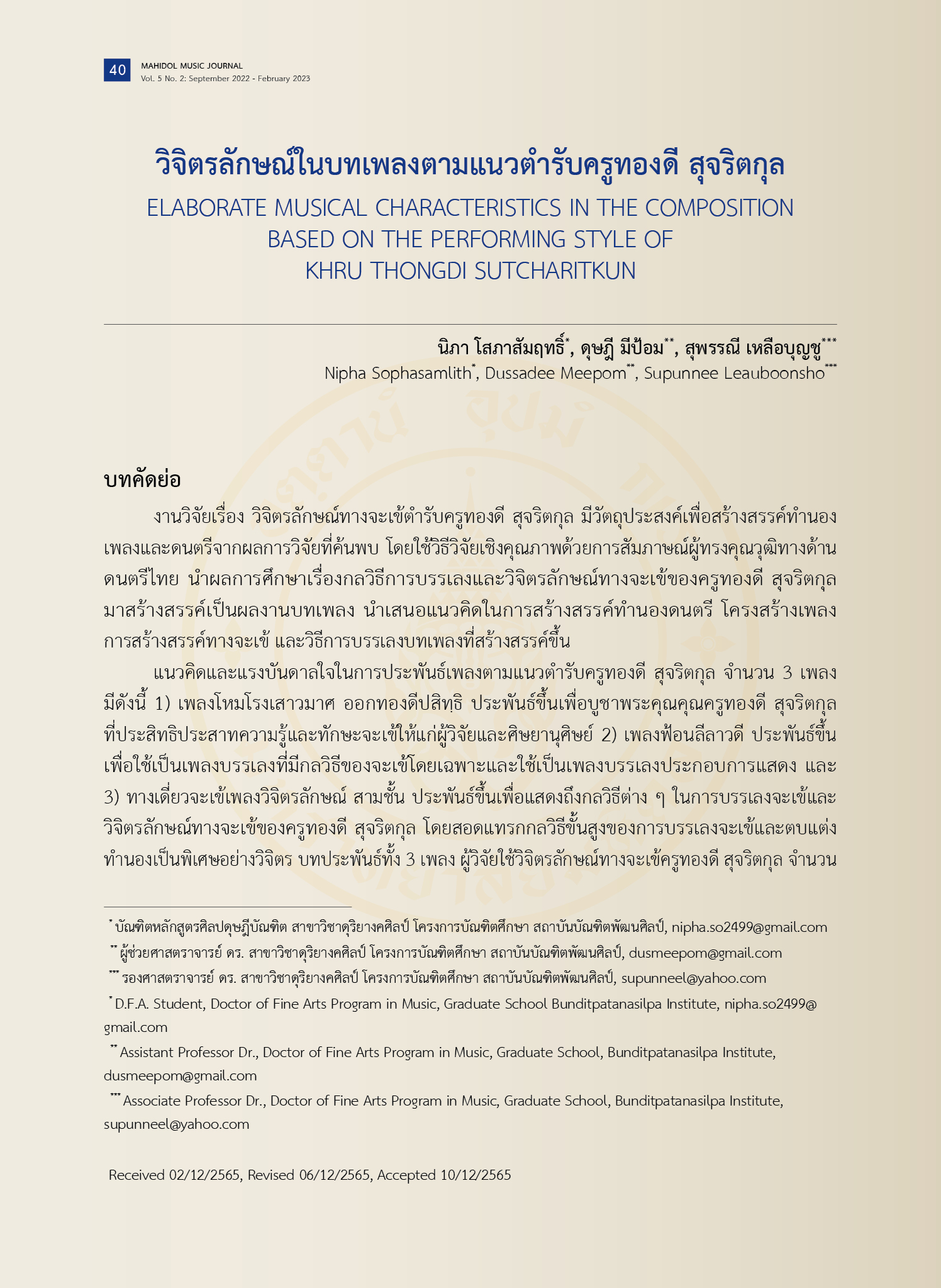ELABORATE MUSICAL CHARACTERISTICS IN THE COMPOSITION BASED ON THE PERFORMING STYLE OF KHRU THONGDI SUTCHARITKUN
Keywords:
Elaborate Musical Characteristic, Composition, Music Performance Style of Khru Thongdi SutcharitkunAbstract
This research aims to create a brand-new Thai classical music composition from the research findings based on qualitative research methods with an in-depth interview with Thai classical music masters and use the research findings to make a brand-new composition presenting musical concepts and practices through the chakhe (Thai zither).
The concept and inspiration derived from Khru Thongdi Sutcharitkun stimulated the author to create a brand-new Thai classical musical composition including three pieces as follows: 1) Hom Rong Sao-wa-mat followed by Thongdi Prasit as to the praise of kind virtue of Khru Thongdi Sutcharitkun in terms of her generous teaching to all students, 2) Fon Lilawadi composed as a solo piece with special musical features of the chakhe to accompany Thai dance, and 3) the solo piece called Wichittralak Sam Chan to demonstrate the elaborate and advanced techniques of the chakhe with the influence of Khru Thongdi Sutcharitkun performing style. The three pieces are developed from elaborate instrumental performing techniques. There are 17 compositional techniques that make the piece beautiful, polite, and sophisticated in terms of the chakhe instrumental realization reflecting the elaborate musical characteristics of the chakhe by Khru Thongdi Sutcharitkun.
References
ช่อทิพย์ ภู่มณี. "การศึกษาอัตลักษณ์การประพันธ์เพลงเดี่ยวจะเข้ของครูสุธารณ์ บัวทั่ง." วิทยานิพนธ์ระดับปริญญามหาบัณฑิต, มหาวิทยาลัยรามคำแหง, 2557.
ณรงค์ชัย ปิฎกรัชต์. "ทฤษฎีความหวง ทฤษฎีการสร้างสรรค์ศิลป์." เอกสารประกอบการเรียนรู้ รายวิชาระเบียบวิธีวิจัยและการสร้างสรรค์ทางดุริยางคศิลป์ รหัสวิชา 434-401. หลักสูตรศิลปดุษฎีบัณฑิต สาขาวิชาดุริยางคศิลป์, สถาบันบัณฑิตพัฒนศิลป์, 2562.

Downloads
Published
How to Cite
Issue
Section
License
Copyright (c) 2023 College of Music

This work is licensed under a Creative Commons Attribution-NonCommercial-NoDerivatives 4.0 International License.
The copyright of the article belongs to the author. Published articles represent the views of the authors. The editorial team neither necessarily agree with nor take any responsibility for the article.


